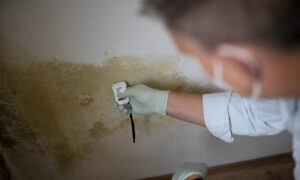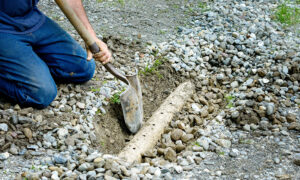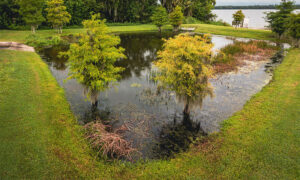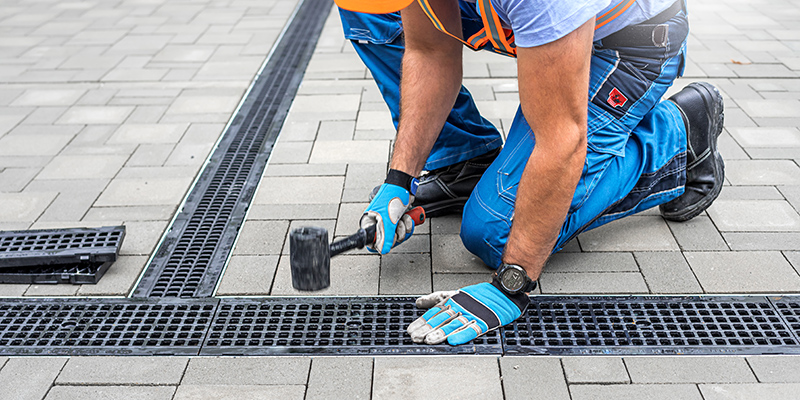Drainage in commercial facilities is an important part of facilities maintenance. Without efficient drainage, the health and safety of everyone in the building could be compromised. It could also impact the property’s condition and overall value.
What Is Drainage?
Drainage is the process of releasing or drawing away any water from a commercial building. It prevents any excess water from pooling in or around the property. Excess water may come from rain, ice, snow, or even bodies of water like ponds, rivers, and lakes. Unchecked irrigation systems and commercial plumbing leaks can also cause drainage issues.
Proper drainage systems drain both subsurface and surface water. The former includes all unseen water that collects underground. Meanwhile, the latter is any water that is visible on the ground. Subsurface water may become surface water over time.
Why Is Drainage in Commercial Facilities Important?
Drainage control in commercial facilities is essential for several reasons. Let’s discuss the impact of proper drainage below.
1. Less Maintenance Work
Improper drainage could lead to frequent plumbing issues. This can cost money because you’ll need more maintenance work to keep the property in good condition. In contrast, functioning drainage systems reduce the need to call in a plumber or maintenance staff.
2. Better Health and Safety
Without proper drainage, water could pool around the property and cause mold growth. It could also encourage mosquitoes as they love laying eggs on still water. While mosquito bites may be harmless sometimes, they can be dangerous if the mosquito carries certain diseases like the Zika Virus or Dengue.
 3. Prevent Water Damage
3. Prevent Water Damage
Proper drainage for commercial facilities is vital because it lets water flow from the property. This prevents potential water damage that may compromise the building’s structural integrity.
4. Reduces Compact Soil
A lack of drainage could lead to denser and more compact soil. This makes it harder for water to drain through, forcing liquids to sit on the soil’s surface. As a result, it may be harder to mow, turf, and landscape the surrounding area. It can also cause more significant damage as more water pools over time.
5. Protects Green Areas
Trees, grass, and other plants all need water to survive. However, too much water could be just as detrimental as a lack of water. This is because too much water could drown the grass and rot the roots of trees. It’s essential to have proper drainage in commercial facilities to prevent green areas from disappearing.
Types of Commercial Drainage Systems
There are different kinds of commercial building drainage systems. Each one offers a different way to redirect water away from the property. Property owners can employ multiple drainage solutions for commercial properties to achieve more efficient drainage.
1. Grading
Water flows everywhere it can. It’s important to carefully assess where water might pass and how you can redirect it. Consider grading the ground to keep surface water away from the property.
2. French Drains
 A French drain is a system that uses perforated pipes underground to move any subsurface water away from the building. The trenches house the piping and drains underground. French drains are great preventive solutions to ensure no unseen water pools under the property.
A French drain is a system that uses perforated pipes underground to move any subsurface water away from the building. The trenches house the piping and drains underground. French drains are great preventive solutions to ensure no unseen water pools under the property.
Commercial property owners can also use gravel, sand, and landscaping textiles to prevent drainage material from moving and debris or soil from getting inside the system.
French drains are ideal for flood-prone areas around the property. However, we recommend thinking twice before installing them in areas with severe slopes. This is because the digging necessary to install French drains could result in further subsurface water problems and interruption issues.
3. Trench Drains
Trench drains are underground drainage systems that remove surface water. They act like gutters because they are long and narrowly lined in concrete. Trench drains also have a grate over the trench to collect the excess water.
This type of system uses slopes to move surface water. It is linked to a storm sewer or waterway to redirect the water flow. Commercial property owners often use trench drains for the building’s foundation. Moreover, since they’re near the surface, trench drains are more convenient and easier to install than French drains.
4. Siphonic Drains
Siphonic drains are significant for properties with flat roofs. The top of the system has a baffle to prevent air from entering the system. As a result, they have lower atmospheric pressure that pulls water in faster. Water moves into the siphonic drain and flows out through a storm basin.
5. Gutters
Slanted roofs can utilize gutters to drain water from the building. The gutters collect all the water to prevent it from running off the roof. This protects the foundation and surrounding areas. As the water runs through the gutters, it flows down until it reaches the downspout and goes into a drain.
 6. Retention or Detention Ponds
6. Retention or Detention Ponds
Retention ponds are water pools that fluctuate based on the amount of runoff and rain. Meanwhile, detention ponds are often dry unless there is excess rain. Both solutions hold water and release it slowly to a different location, preventing erosion and flooding.
7. Bioswales
Bioswales are landscaping elements that offer a path for the water to be slowly redirected. They prevent excess water from rushing into a waterway or sewer, mitigating flooding and erosion. Bioswales are often made of gently sloping troughs with plants and flowers.
8. Rainwater Harvesting Systems
Rainwater harvesting systems collect excess water or runoff for reuse. Commercial buildings with large, flat roofs, such as apartments, offices, and shopping malls, can benefit the most from these systems. When rain falls on the roof, the rainwater harvesting system redirects and stores the water.
9. Emergency Overflow Drain Systems
Drainwater management in commercial buildings can be complex if you live in an area prone to typhoons and heavy storms. Even if you install primary drainage systems on roofs, the water can still overflow during a heavy downpour. In this case, secondary or emergency overflow drain systems may be necessary. These are roof drains or scuppers installed where water will be entrapped if the primary drain overflows.
How to Spot Issues With Drainage in Commercial Facilities
What are the signs of improper or inadequate drainage in commercial facilities? Here are some things to look out for the next time you conduct an inspection:
- Foul smells from drains
- Leaky fixtures and pipes
- Low water pressure
- Gurgling sounds or other strange noises from drains and pipes
- Sewage backups
- Slow or clogged drains
- Higher-than-average water bills
- Wet spots on floors and walls
Stay Vigilant
Proper drainage in commercial facilities is essential to avoid potential water damage. Otherwise, you might lose a lot of money on plumbing maintenance, high water bills, and even structural damage. Stay proactive with inspection and watch out for potential issues.
Maintenance Specialists Inc. offers premier commercial building maintenance services to our clients. Dial 704.405.6000 or contact us online to learn more!
RELATED ARTICLES:
- How Important Is Erosion Control For Commercial Buildings?
- What Is Commercial Roof Flashing And How Important Is It?
- Which U.S. State Has The Worst Bug Problem?

